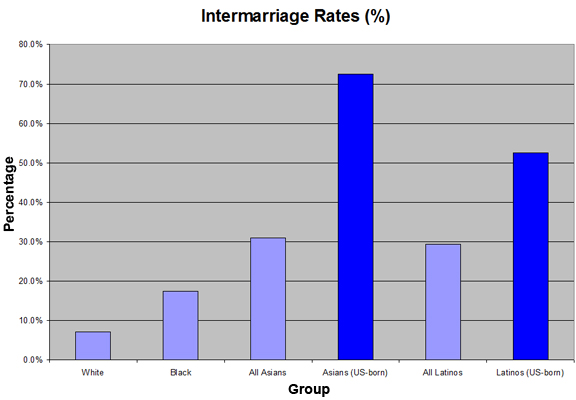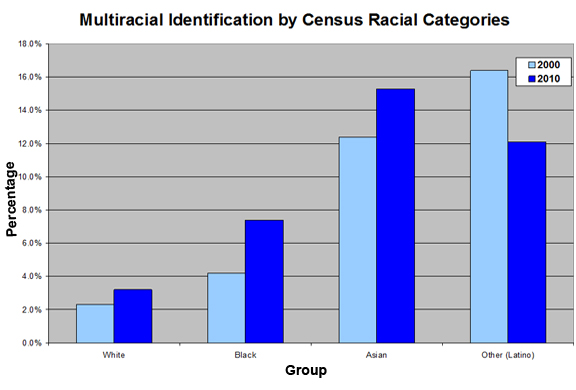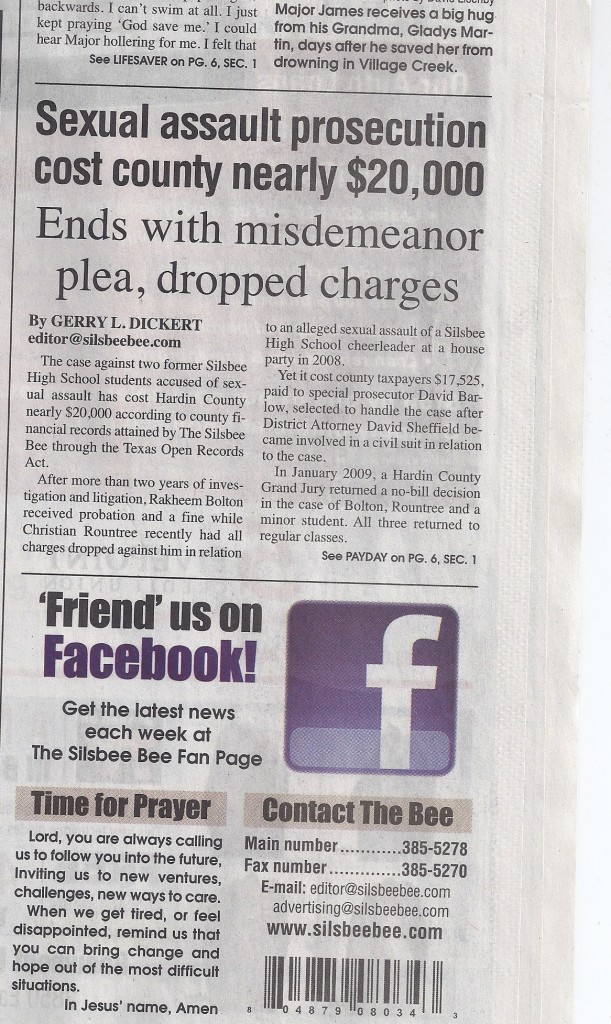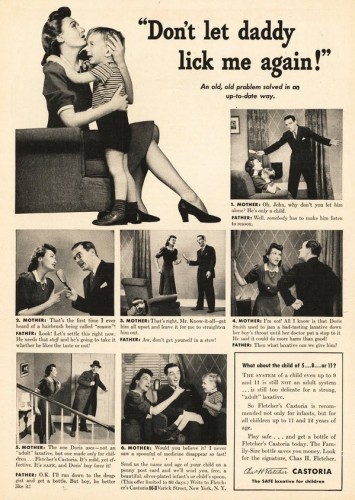Rising Immigration and Intermarriage
Today we see both increased immigration and rising rates of intermarriage. In 1960, less than 1% of U.S. marriages were interracial, but by 2008, this figure rose to 7.6%, meaning that 1 out of every 13 U.S. marriages was interracial. If we look at only new marriages that took place in 2008, the figure rises to 14.6%, translating to 1 out of every 7 American marriages.
The rising trend in intermarriage has resulted in a growing multiracial population. In 2010, 2.9% of Americans identified as multiracial. Demographers project that the multiracial population will continue to grow so that by 2050, 1 in 5 Americans could claim a multiracial background, and by 2100, the ratio could soar to 1 in three.
At first glance, these trends appear to signal that we’re moving into a “post-racial” era, in which race is declining in significance for all Americans. However, if we take a closer look at these trends, we find that they mask vast inter-group differences.
For instance, Asians and Latinos intermarry at much higher rates than blacks. About 30% of Asian and Latino marriages are interracial, but the corresponding figure for blacks is only 17%. However, if we include only U.S.-born Asians and Latinos, we find that intermarriage rates are much higher. Nearly, three-quarters (72%) of married, U.S.-born Asians, and over half (52%) of U.S.-born Latinos are interracially married, and most often, the intermarriage is with a white partner. While the intermarriage rate for blacks has risen steadily in the past five decades, it is still far below that of Asians and Latinos, especially those born in the United States.
The pattern of multiracial identification is similar to that of intermarriage: Asians and Latinos report much higher rates of multiracial identification than blacks. In 2010, 15% of Asians and 12% of Latinos reported a multiracial identification. The corresponding figure for blacks is only 7 percent. Although the rate of multiracial reporting among blacks has risen since 2000, it increased from a very small base of only 4.2 percent.
The U.S. Census estimates that about 75-90% of black Americans are ancestrally multiracial, so it is perplexing that only 7% choose to identify as such. Clearly, genealogy alone does not dictate racial identification. Given that the “one-drop rule” of hypodescent* is no longer legally codified, why does the rate of multiracial reporting among blacks remain relatively low?
Patterns in Racial/Ethnic Identity
These are some of the vexing questions that we tackle in our book, The Diversity Paradox, drawing on analyses of 2000 Census data, 2007-2008 American Community Survey, as well as 82 in-depth interviews: 46 with multiracial adults and 36 with interracial couples with children.
Turning to the in-depth interviews with the interracial couples, we found that while all acknowledged their children’s multiracial or multiethnic backgrounds, the meaning of multiraciality differs remarkably for the children of Asian-white and Latino-white couples on the one hand, and the children of black-white couples on the other. For the Asian-white and Latino-white couples, they may go to great lengths to maintain distinctive elements of their Asian or Latino ethnic and cultural backgrounds, but they believe that as their children grow up, they will simply identify, and be identified as “American” or as “white,” using these terms interchangeably, and consequently conflating a national origin identity with a racial identity.
The Asian-white and Latino-white respondents also revealed that they can turn their ethnicities on and off whenever they choose, and, importantly, their choices are not contested by others. Our interview data reveal that the Asian and Latino ethnicities for multiracial Americans are what Herbert Gans and Mary Waters would describe as “symbolic”—meaning that they are voluntary, optional, and costless, as European ethnicity is for white Americans.
By contrast, none of the black-white couples identified their children as just white or American, nor did they claim that their children identify as such. While these couples recognize and celebrate the racial mixture of their children’s backgrounds, they unequivocally identify their children as black. When we asked why, they pointed out that nobody would take them seriously if they tried to identify their children as white, reflecting the constraints that black interracial couples feel when identifying their children. Moreover, black interracial couples do not identify their children as simply “American” because as native-born Americans, they feel that American is an implicit part of their identity.
The legacy of the one-drop-rule remains culturally intact, explaining why 75-90% of black Americans are ancestrally multiracial, yet only 7% choose to identify as such. It also explains why we, as Americans, are so attuned to identifying black ancestry in a way that we are not similarly attuned to identifying and constraining Asian and Latino ancestries.
On this note, it is also critical to underscore that a black racial identification also reflects agency and choice on the part of interracial couples and multiracial blacks. Given the legacy behind the one-drop rule and the meaning and consequences behind the historical practice of “passing as white,” choosing to identify one’s children as white may not only signify a rejection of the black community, but also a desire to be accepted by a group that has legally excluded and oppressed them in the past, a point underscored by Randall Kennedy.
Black Exceptionalism
But regardless of choice or constraint, the patterns of intermarriage and multiracial identification point to a pattern of “black exceptionalism.” Why does black exceptionalism persist, even amidst the country’s new racial/ethnic diversity? It persists because the legacy of slavery and the legacy of immigration are two competing yet strangely symbiotic legacies on which the United States was founded. If immigration represents the optimistic side of the country’s past and future, slavery and its aftermath is an indelible stain in our nation’s collective memory. The desire to overlook the legacy and slavery becomes a reason to reinforce the country’s immigrant origins.
That Asians and Latinos are largely immigrants (or the children of immigrants) means that their understanding of race and the color line are born out of an entirely different experience and narrative than that of African Americans. Hence, despite the increased diversity, race is not declining in significance, and we are far from a “post-racial” society. That we continue to find a pattern of black exceptionalism—even amidst the country’s new racial/ethnic diversity—points to the paradox of diversity in the 21st century.
——————-
* The one-drop rule was first implemented during the era of slavery so that any children born to a white male slaver owner and a black female slave would be legally identified as black, and, as a result, have no rights to property and other wealth holdings of their white father.
———————
Jennifer Lee is a sociologist at the University of California, Irvine, specializing in intersection of immigration and race and ethnicity. She wrote, with Frank Bean, a book called The Diversity Paradox, that examines patterns of intermarriage and multiracial identification among Asians, Latinos, and African Americans. Lee wrote the following analysis of her research for Russell Sage. And we’re happy to post it here.











